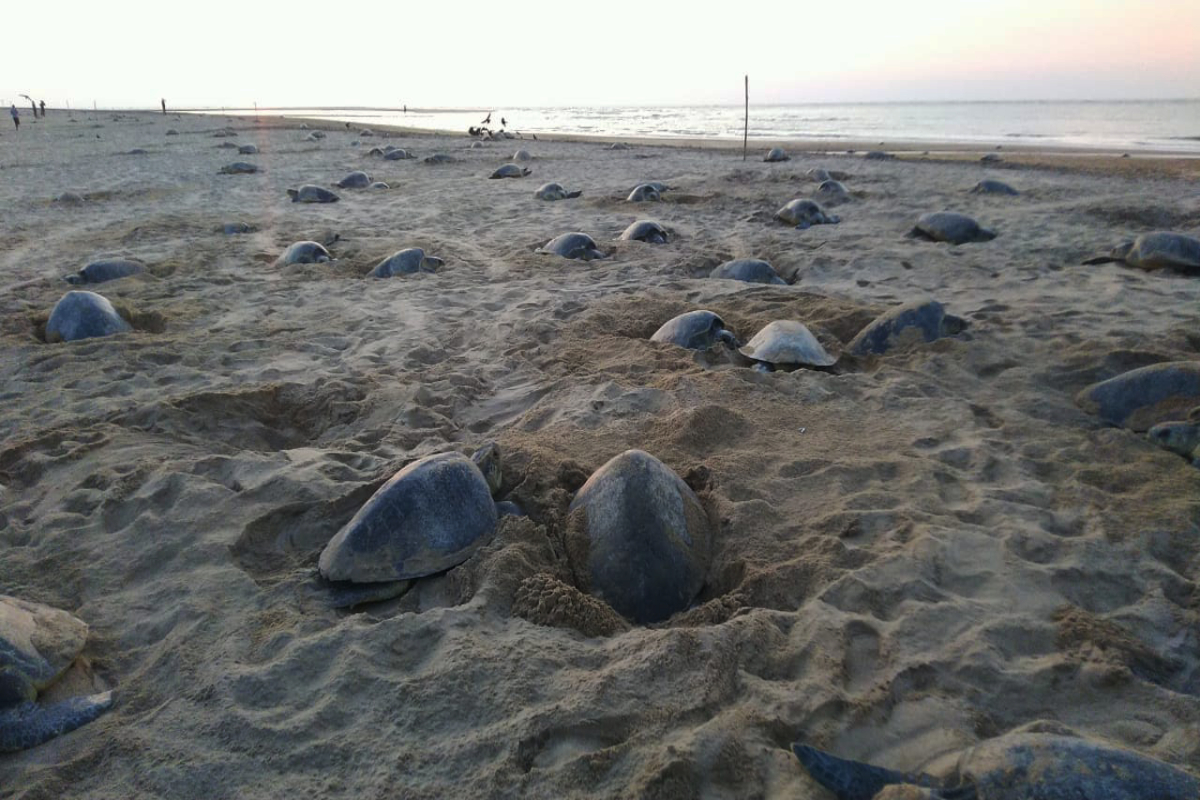The endangered Olive Ridley female turtles have begun arriving at Gahirmatha beach, world’s largest known rookery of these species, to lay eggs with more than three lakh marine animals’ en-masse arrival for the unique natural heritage at the tranquil nesting beach.
The annual mass nesting of these delicate marine species began on Thursday night in Nasi-2 beach of the Gahirmatha nesting ground. While 2,14,058 turtles laid eggs on Thursday , 88,605 marine animals crawled onto the beach on Friday night for mass nesting.
Thus, in the past 48 hours, as many as 3,02,663 turtles have turned up for mass nesting. The natural phenomenon is expected to last for at least one week. Last year, 5,011,57 turtles laid eggs. Thus, the mass nesting figure is likely to cross last year’s figure, said Bichitranda Behera, the range officer of the Gahirmatha forest range.
It may be recalled here that around 6.37 lakh Olive Ridley sea turtles have arrived for mass nesting at Rushikulya coast in Ganjam district from 23 February to 2 March this year, setting a new nesting record for the beach.
We are expecting the large congregation for the next two to three days while the mass nesting is expected to continue at least for a week, said range officer Behera.
The perfect topography and profile of the beach, free from sea erosion, proved to be conducive for turtles to virtually invade the beach, he said.
Nasi-II beach comes under the jurisdiction of Defence research and Development Organisation which conducts missile tests from neighbouring Wheeler Island. That’s why, it is a prohibited territory and outsiders are disallowed entry into the unmanned Island. Only forest personnel are deployed there for patrolling.
The forest personnel were the lone witness to the rare visual treat with turtles crawling on the beach and triggering hissing noise and soothing cacophony. No wildlife researcher made it to the place this time to witness the rare natural phenomenon because of prohibition on visit to the place
“The presence of forest personnel on the nesting ground did not bother the turtles as they maintained distance from the animals. Emphasis is on to provide privacy to the marine animals during the egg-laying process. On their seaward journey, they moved past the forest guards at hand-shaking distance”, said the officials who witnessed mass nesting also popularly described arribada, a Spanish term for egg laying”, narrated the forest officials.
It’s only the female turtles that invade the nesting beaches usually at the dead of the night for laying eggs, the phenomenon otherwise described as ‘arribada’. After indulgence in instinctive egg-laying, the turtles leave the nesting ground to stride into the deep sea water. Hatchlings emerge from these eggs after 45-60 days. It is a rare natural phenomenon where the babies grow without their mother, said officials.
An Olive Ridley usually lays about 120 to 150 eggs from which hatchlings emerge after about 45 to 50 days. But not all eggs remain intact as predators devour it. Besides, eggs are also washed away by sea waves during high tide. The eggs are incubated in the nest and grow, sans mother, to emerge as hatchlings.












